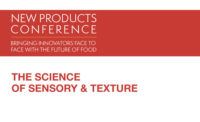The Science of 'Crave'
Tap into consumer desires and make a product "craveable."

Temptation Piled High. Consumers crave certain items like this Classic Guac’ Burger.
PHOTO COURTESY OF: AVOCADOS FROM MEXICO / NOEL BARNHURST PHOTOGRAPHY
There’s an art and science to developing successful new foods—be it snacks, cocktails, QSR LTOs, or gourmet farm-to-table experiences. It’s not always about tapping the latest trend ingredient and sprinkling it into your flagship item. There’s a reason why macaroni and cheese, chocolate, and ice cream have staying power. It’s because at one point or another, we crave them.
At Prepared Foods’ recent New Products Conference (NPC) in Chicago, SRG shared new research that explores why people crave what they do. It’s called, “Craveology.” Built with psychologists, neurologists, anthropologists, and consumers across three continents, this model shows that cravings are so much more than sugar, salt, and fat. By stepping back and first looking at the emotional side of cravings, we unlocked the anatomy (and the “why”) of the food experiences consumers crave most.
What are Cravings?
Cravings are the body’s way of bringing emotional balance—whether from conflicts, deadlines, stress, or even the mundane rituals of everyday. To understand what is behind these imbalances, we monitored week-long craving diaries of consumers across three continents. From this, we identified five emotional spectra on which these imbalances occur. These imbalances are what trigger cravings.
Our cravings can be based on basic physiological states: You’re cold. You want soup. It could be something to give us energy—or to calm us down. A way to interact and engage with others (think sharing a pizza). A way to escape from the boredom of every day. Or a way to break away and take a break.
By understanding these emotional need states at SRG, we have another tool within our culinary practice to build foods, experiences and brands that incorporate the elements that a target consumer is craving.
Craving – Capturing Adventure
There’s nothing like a trade show or business conference to get attendees looking for something really exciting. So we decided to show how cravings come to life to attendees at last month’s Prepared Foods New Products Conference. Through a curated StreetDive,* SRG took NPC attendees to some of Chicago’s hottest restaurants. The goal was to illustrate how smart food marketers are tapping into consumer’s ever changing tastes, their desires for new kinds of dining experiences, and even their most basic need to feel at home.
In breaking down the different states of Craveology, one that certainly applies to the dining experience is the desire for something new. Our research showed that in moments when people are swayed toward monotony, they crave food experiences that disrupt, differentiate, and give them a taste of adventure and escape.
Our favorite NPC StreetDive stop was Three Dots and a Dash. Located in Chicago’s River North, this speakeasy is anything but predictable. Opulent, dark, and irreverent, this tiki bar setting breaks all the rules of reality and allures you into a different world entirely. It has unique glasses, smoking and bubbling drinks, party bowls, and creates special flavored cocktails.
The sensory overload of taste and experience satisfies the crave to alter one’s structure of reality to something completely different. We have seen many examples of this in the consumer marketplace with licorice ice-cream, sour candy and outrageously spiced sauces. All food experiences consumers devour.
Creating a craveable food experience starts with empathy for your consumer, understanding not only their situational context and flavor preferences, but also their emotional state in moments that matter. Applying some of the learning for Craveology can be used as a tool for plotting emotional imbalances and illuminating the emotional benefits your target craves most. Yes, a craveable food must first be delicious, but it also needs to mean something to the person eating it.
*Trademark protected
Looking for a reprint of this article?
From high-res PDFs to custom plaques, order your copy today!





